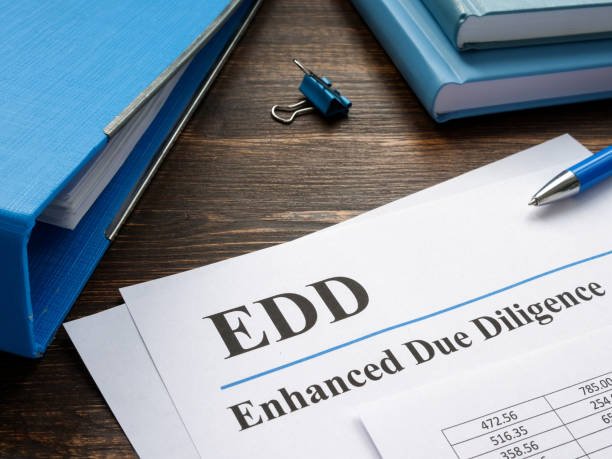Due diligence is an improved method of screening clients and businesses thought to be involved in financial crimes in some way.
The procedure is based on gathering and confirming more substantial data about the client’s experience, sources of funds, and business.
The application of EDD requirements in the banking sector is crucial because a large number of transactions occur there. There is always a chance of getting high-risk customers.
Any form of EDD assists financial institutions in identifying and avoiding risky operations before they occur.
Thomson Reuters has stated that this measure was placed at a total of $213 across the world. 9 billion in 2021, EDD practices are still vital for companies to maintain, which has also been stressed by the two studies.
Why is EDD Important in AML Compliance?
EDD in AML is needed to help avoid the risks posed by highly risky customers. Authorities worldwide require organizations to implement EDD as a way to ensure that wrong-doers do not abuse the financial system.
The repercussions of failing to meet the expectations of EDD are strict. One is likely to be penalized in terms of fines and a company’s reputation.
For example, in 2021, a huge financial institution was penalized by the US Department of Justice $390mln for AML compliance breakdowns evidencing the importance of EDD.
Bonus: Minimise risks in compliance for your financial institution and ensure that you incorporate strict EDD policies to avoid financial crimes and regulatory fines today.
Steps to Comply with EDD Requirements
To meet the EDD requirements, a set of procedures and measures should be taken. It guarantees the proper identification of the potentially dangerous client. Here are steps guide on how to go through this process as follow:
1. Identify High-Risk Customers
Knowing who your high-risk customers are is the key to EDD compliance. Customers are connected to risky businesses such as gambling or arms dealing, and other customers have extraordinary and complicated transactions.
A proper risk appraisal formula is required in which the details of the customer, the transaction records, and other necessary information have to be checked.
Data from a LexisNexis study in 2022 revealed that 49% of financial institutions had raised the frequency of risk assessments to identify high-risk customers more adequately.
2. Gather Additional Information
The nature of the information that EDD in banking seeks includes the source of funds, business purpose, and information relating to beneficial owners.
This data plays a critical role in analyzing the legitimacy of the customer’s transactions and their financial habits.
68 percent of the banks in the EU have claimed to be investing in improving their data acquisition procedures to comply with EDD.
3. Verify Sources of Funds
Checking the source of the money is an essential part of the EDD procedures. It provides a guarantee to the transactions performed that the money used is not an outcome of unlawful actions.
For individuals, it may be checking on their salary, investment, or property sale. For businesses, it requires checking on corporate records, registration documents, and financial statements, among others.
A survey conducted in 2023 stated that about 56 percent of financial institutions complained that they used to have difficulties in carrying out due diligence tests on the source of funds.
4. Monitor Transactions Continuously
EDD in AML is not a one-step process. It is important to monitor the transactions regularly to detect suspicious activities in EDD and AML.
This includes looking at the background, purpose, and nature of transactions and seeking warning signs.
The use of automated tools eases the process. In a report by PwC in 2023, 74% of the financial institutions had integrated the automated transaction monitoring system to improve EDD compliance.
5. Conduct Adverse Media Checks
Any organization or entity that deals with developmental disabilities needs to conduct an adverse media check for EDD compliance.
It is simply the exposure of negative news or reports that tell of possible risks to a customer. It becomes relevant to screen regularly for such information to enrich the development of an adequate risk profile.
Adverse media screening is also important, as in 2022, sixty-one percent of the banks will perform this screening as part of their ongoing monitoring.
6. Perform On-Site Visits
Verify the physical existence of the business and check whether it is as stated in the information given.
The lack of a genuine address can be a hint of fraudulent activity. The effectiveness of the alerts can be assessed by comparing the pieces of information viewed by the software.
In the survey conducted in 2021, 45 percent of financial firms pay on-site visits to risky customers to check on compliance with Enhanced due diligence standards.
7. Implement Ongoing Monitoring and Reviews
The customers’ information and their transaction history have to be under constant observation.
The revised risk evaluations have to be continually updated and examined now and then. It contributes to ensuring that there is always compliance with EDD at all times.
In this year’s report, it was established that 78% of the financial institutions have stepped up the continuous monitoring that is used to address high-risk customers.




